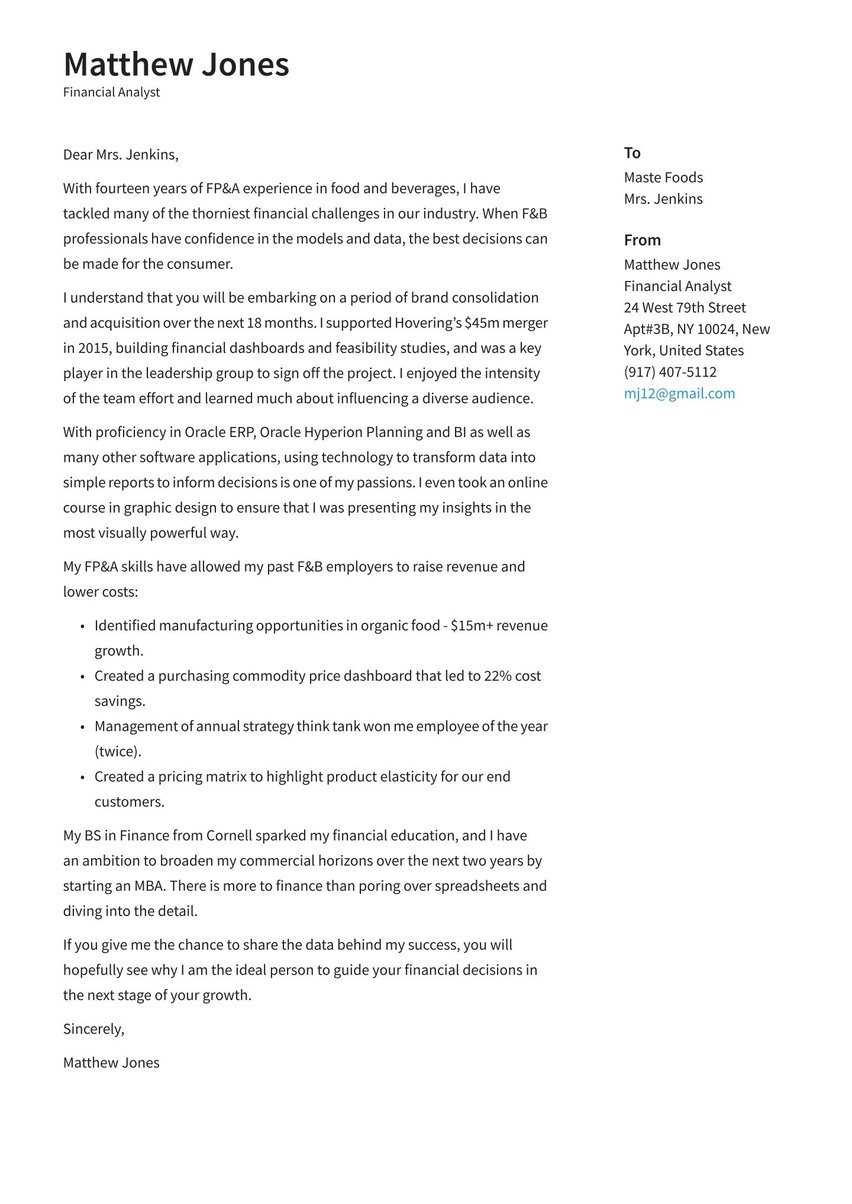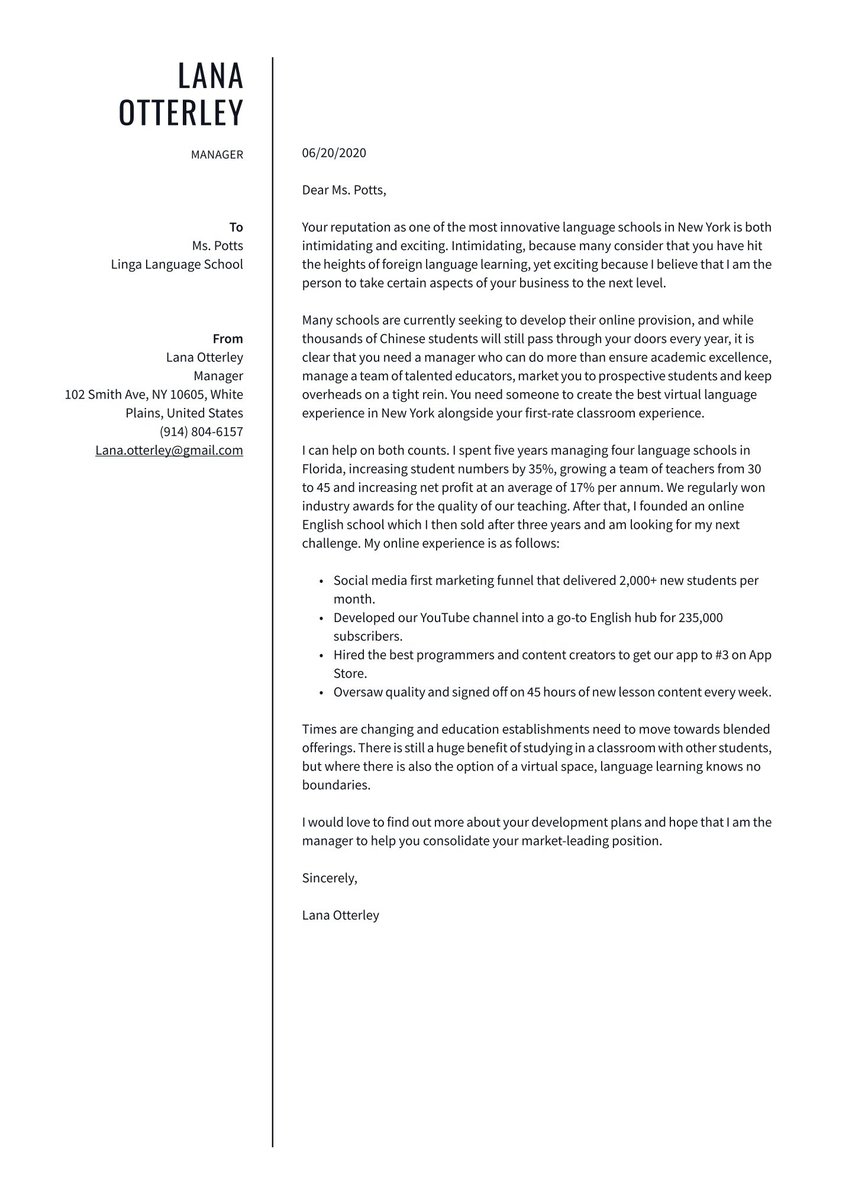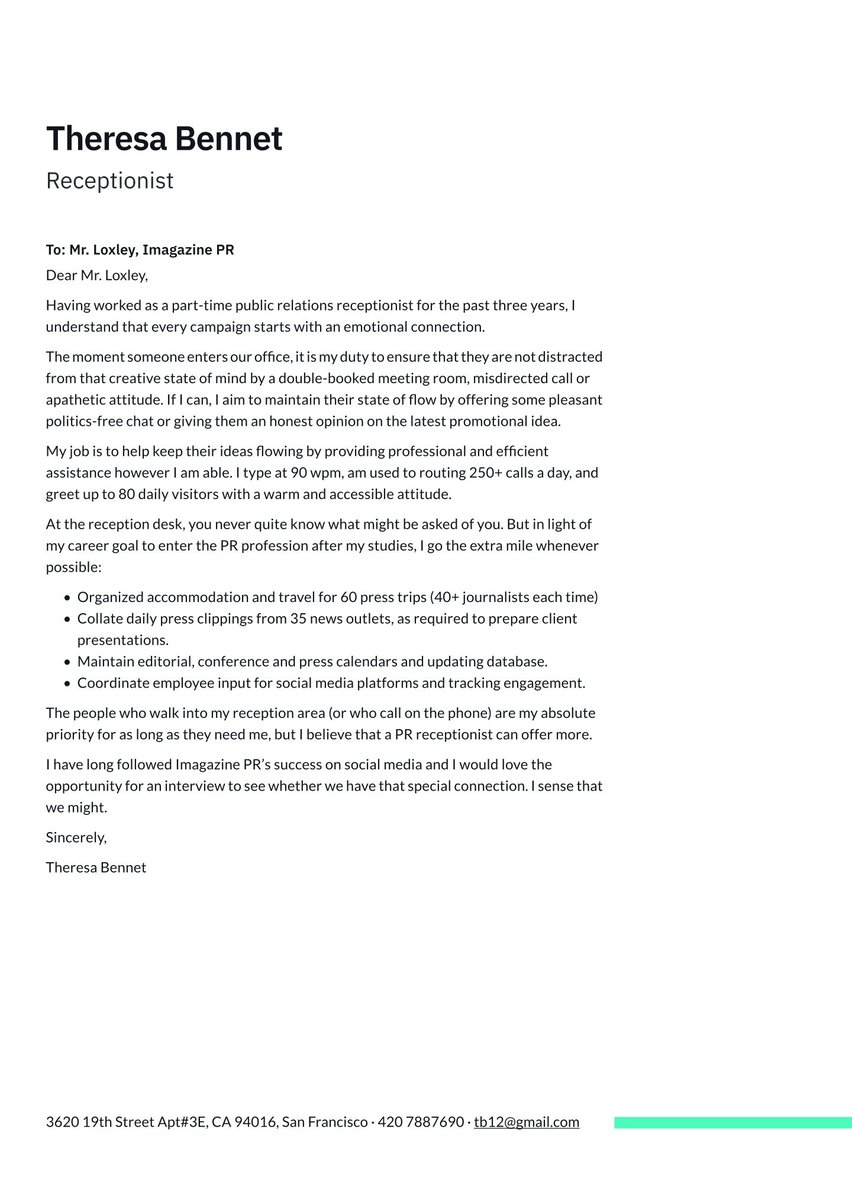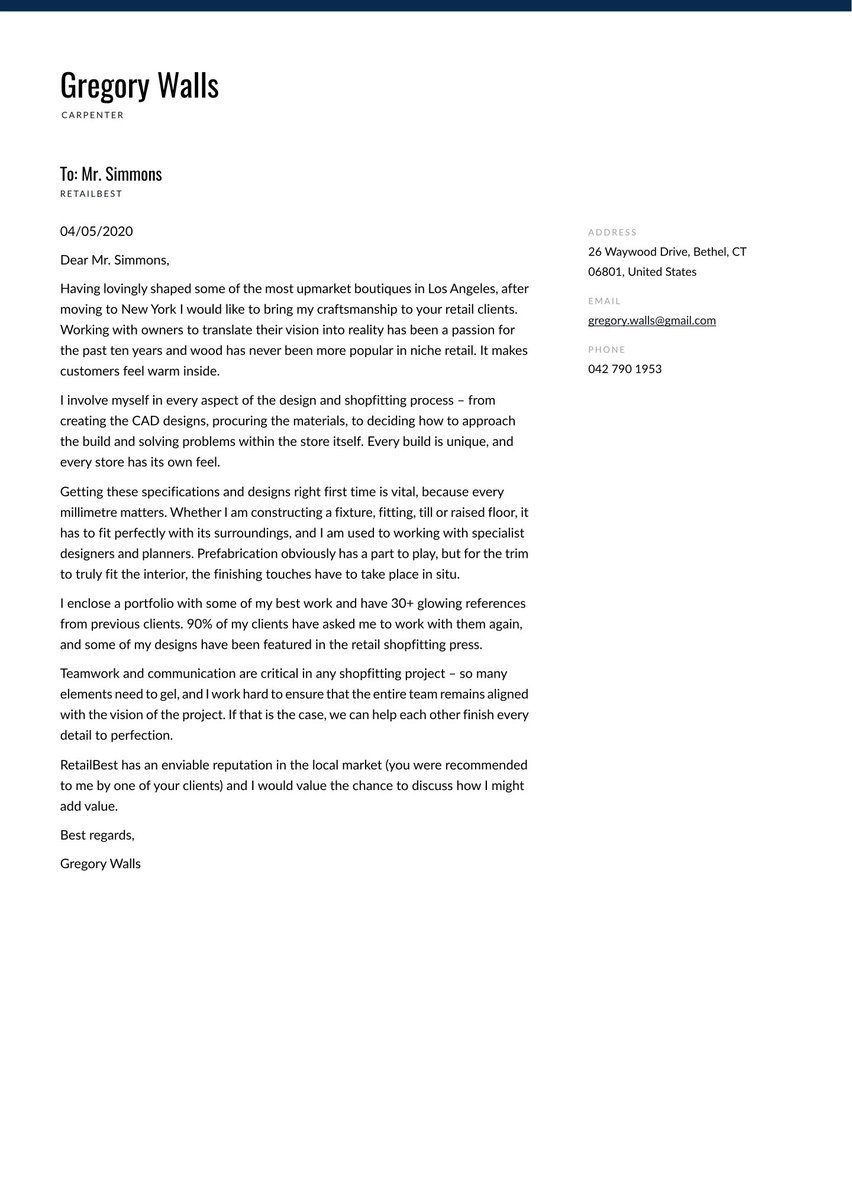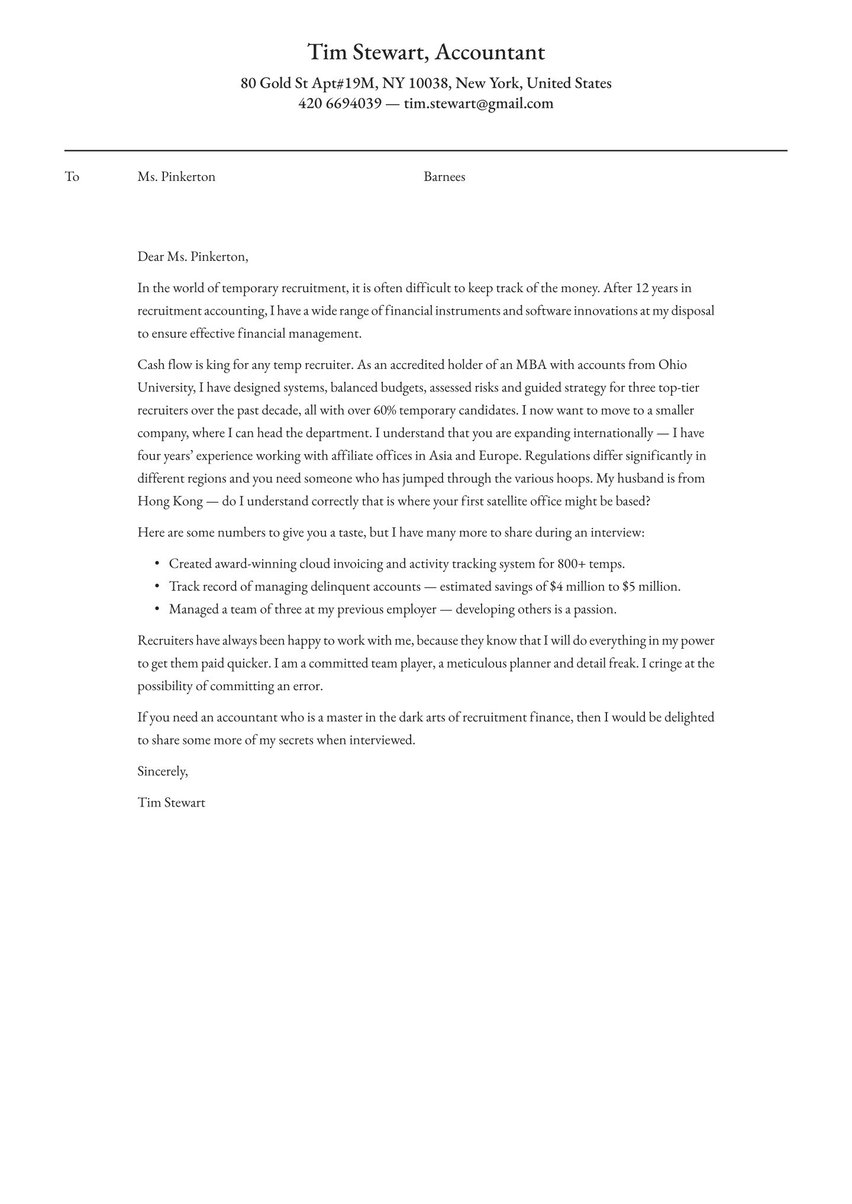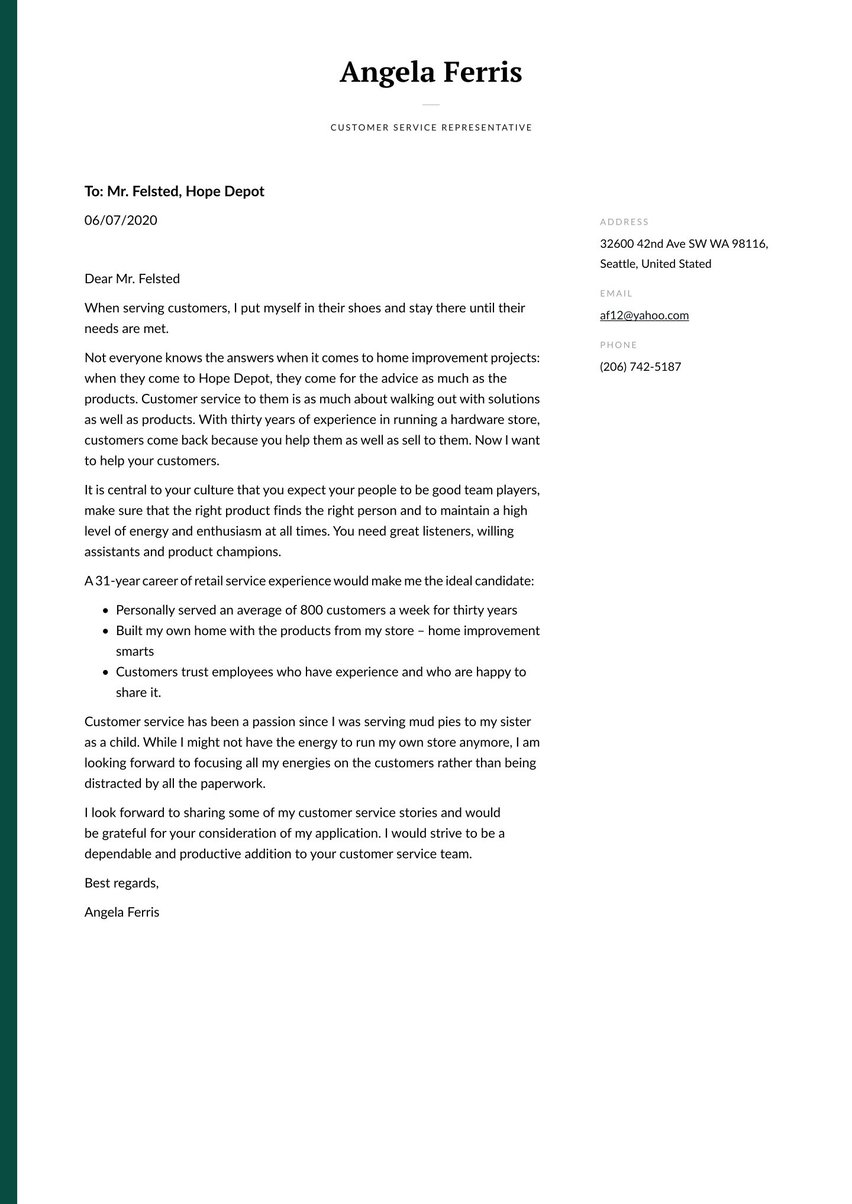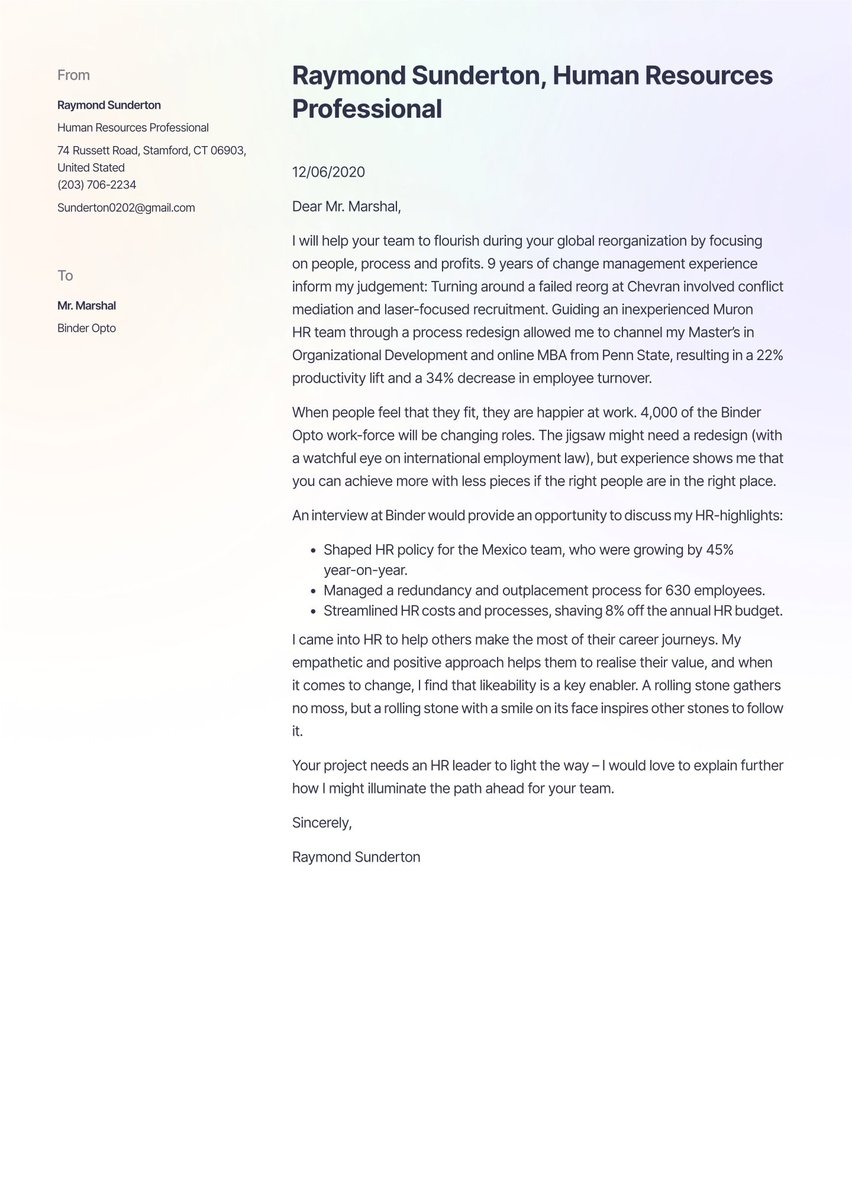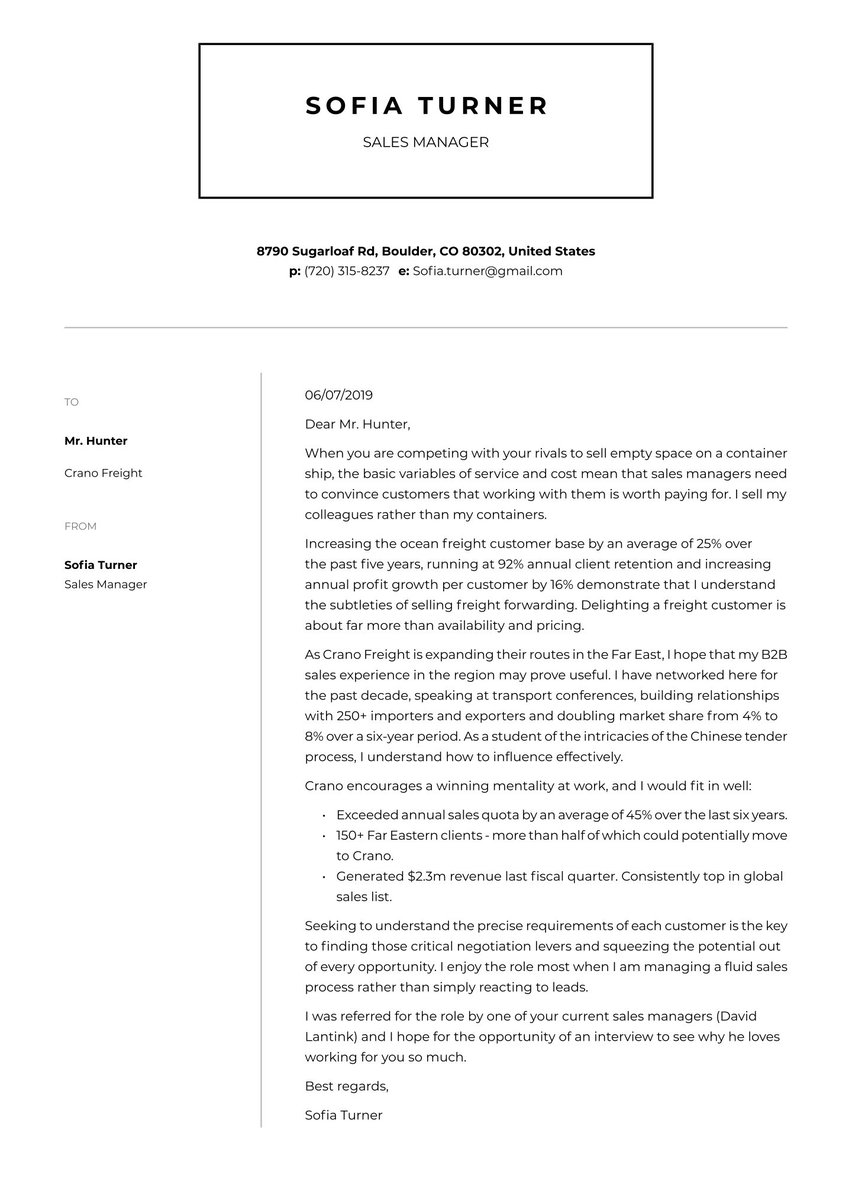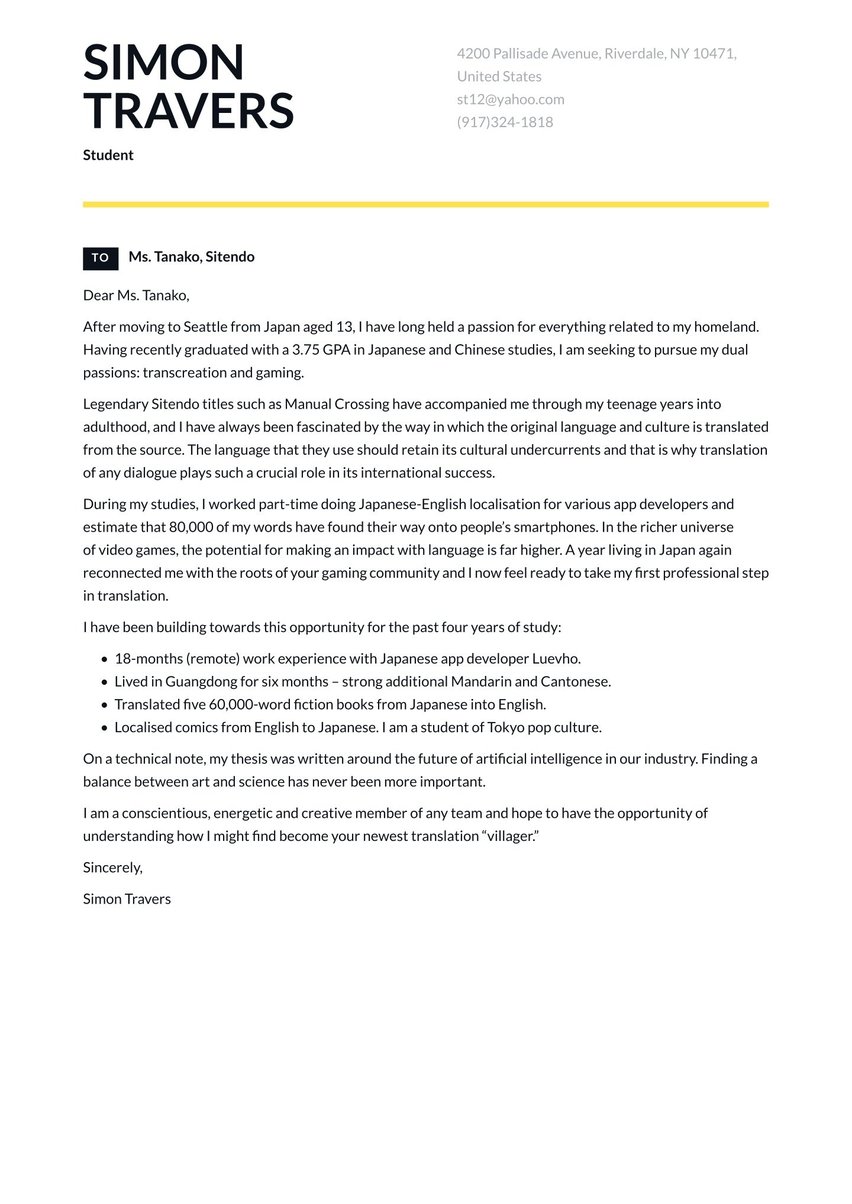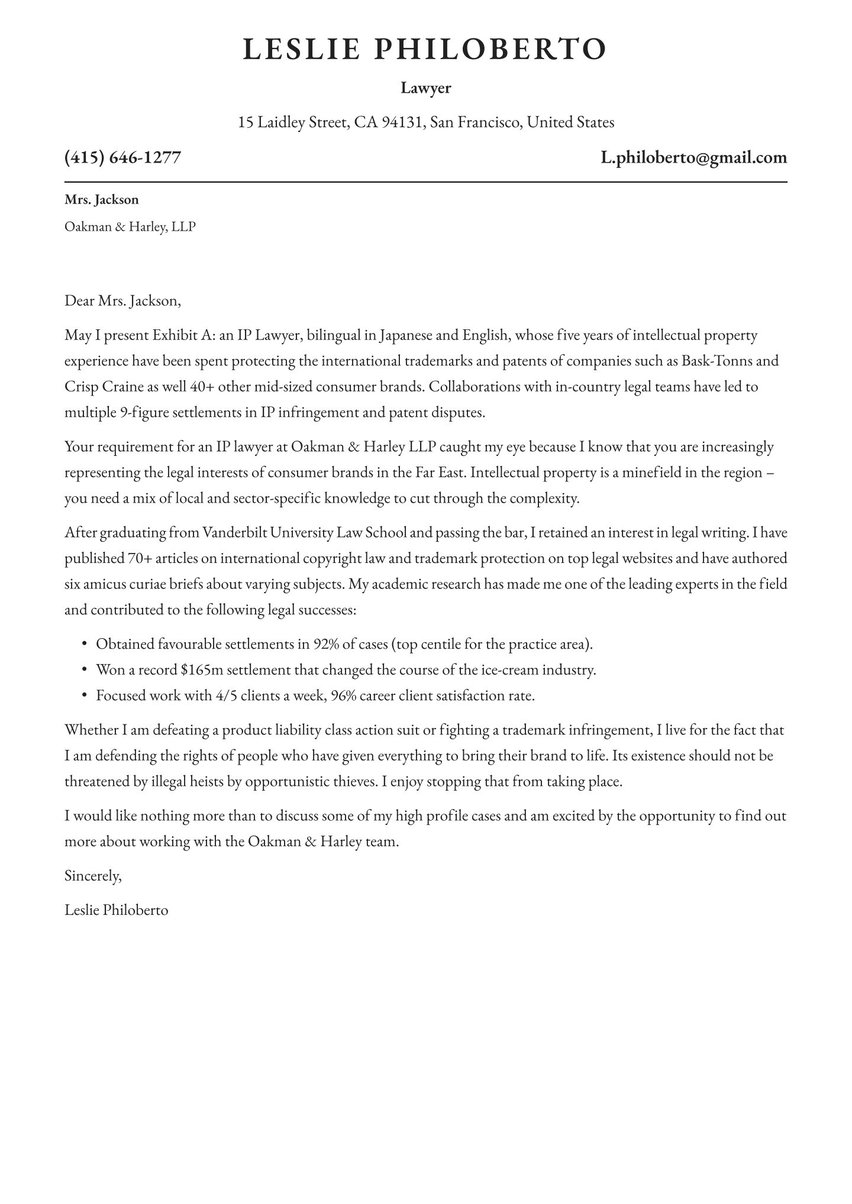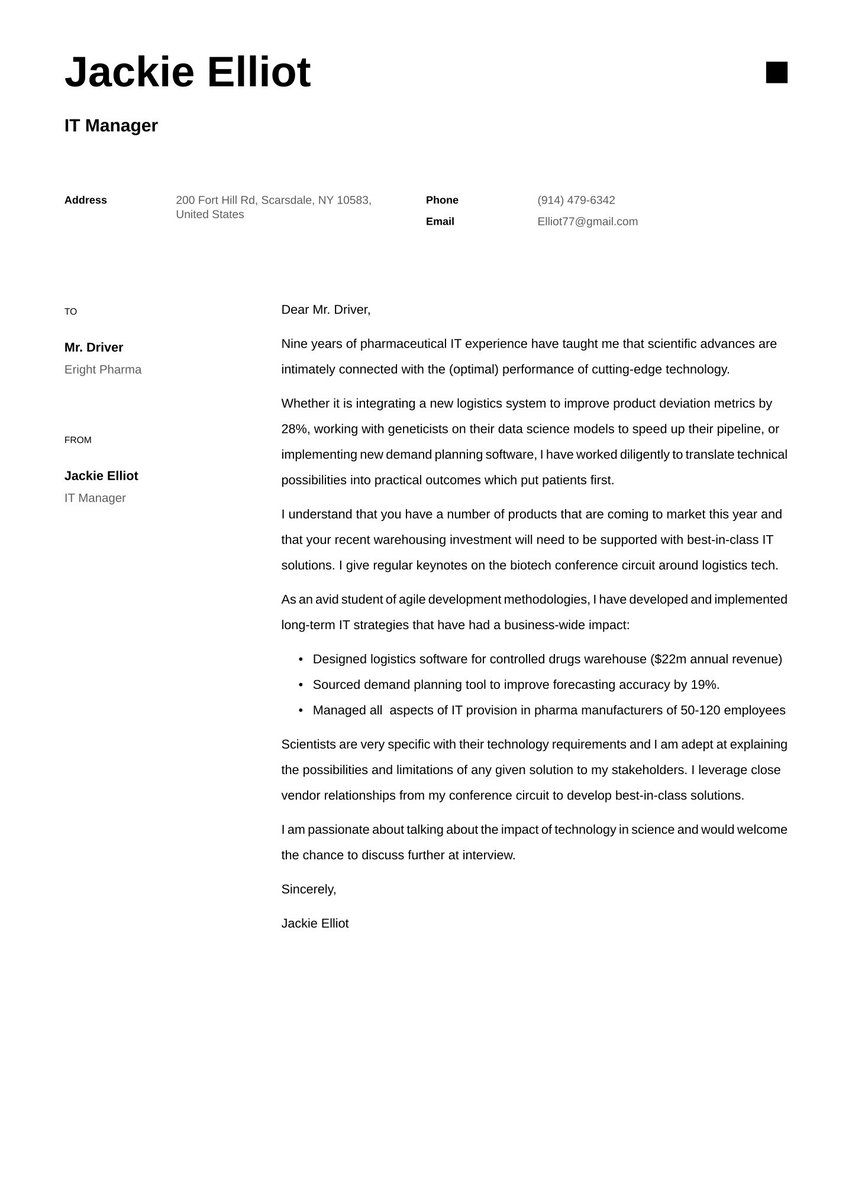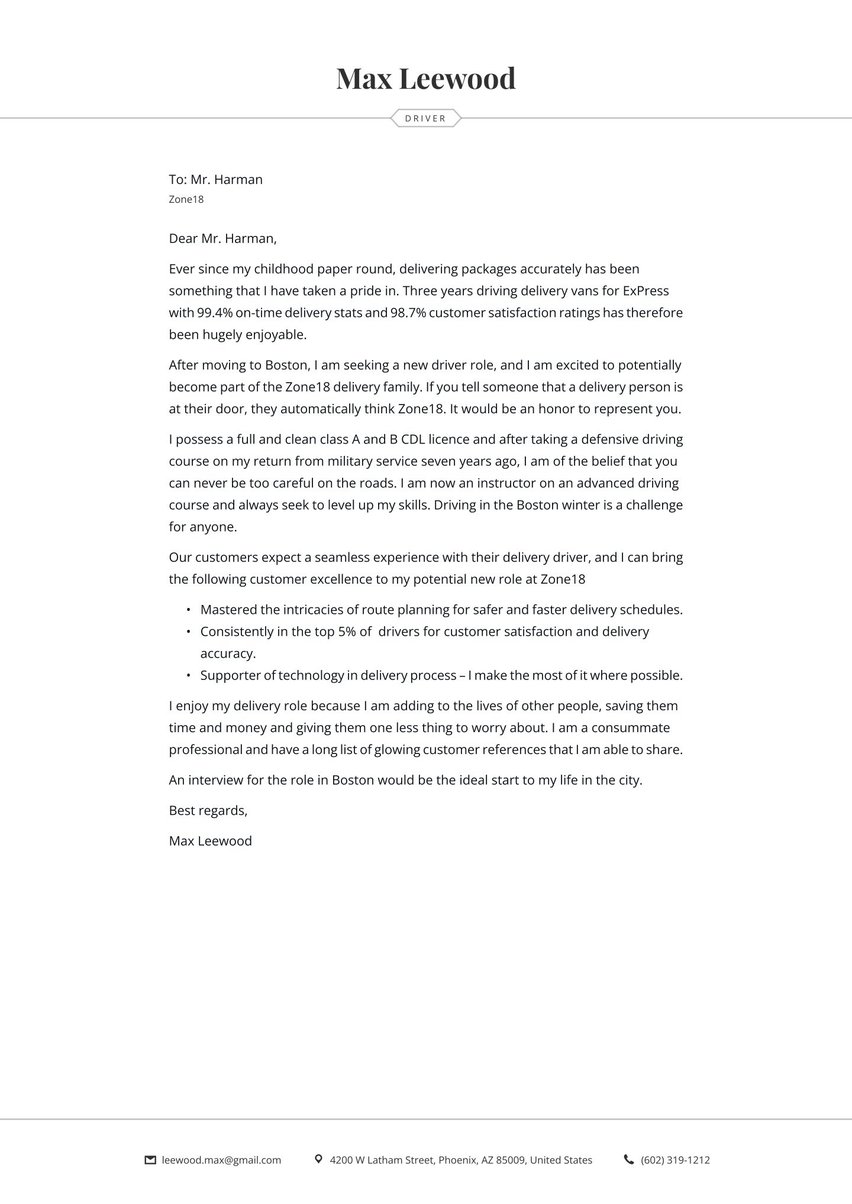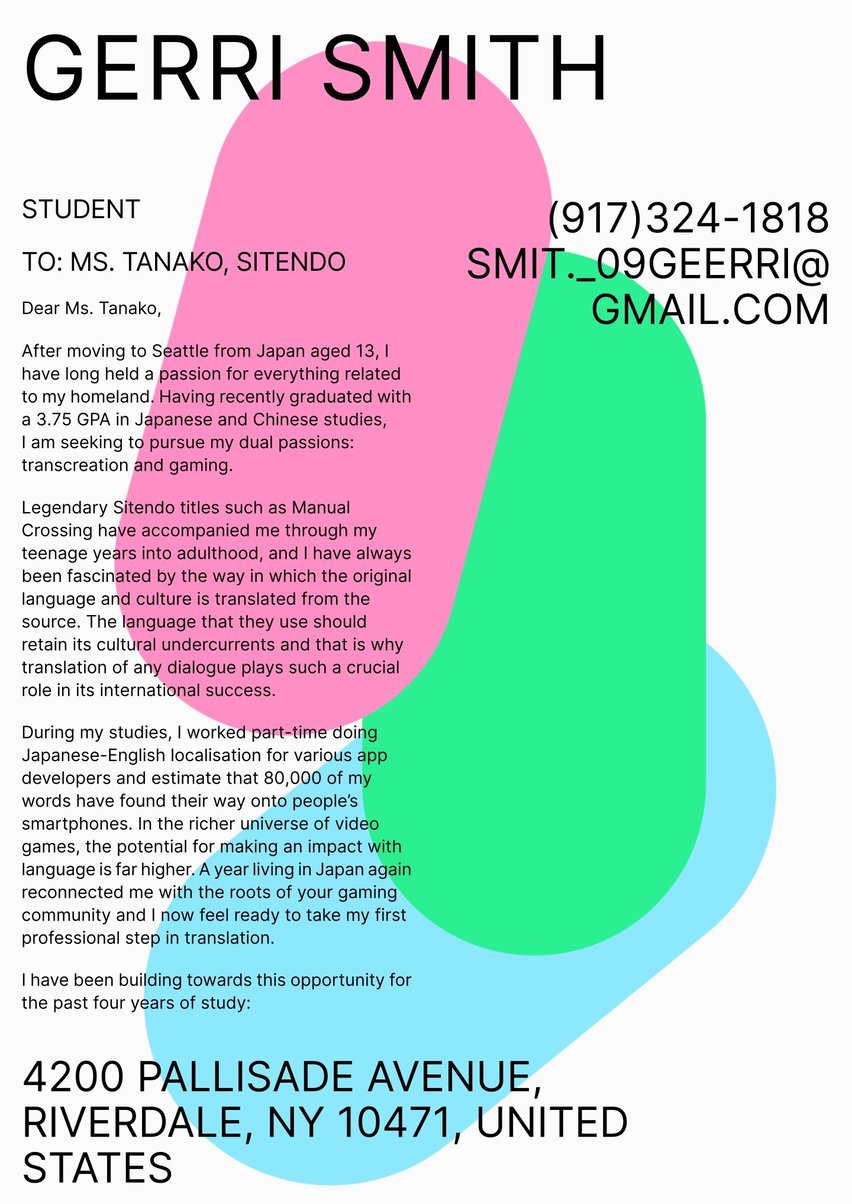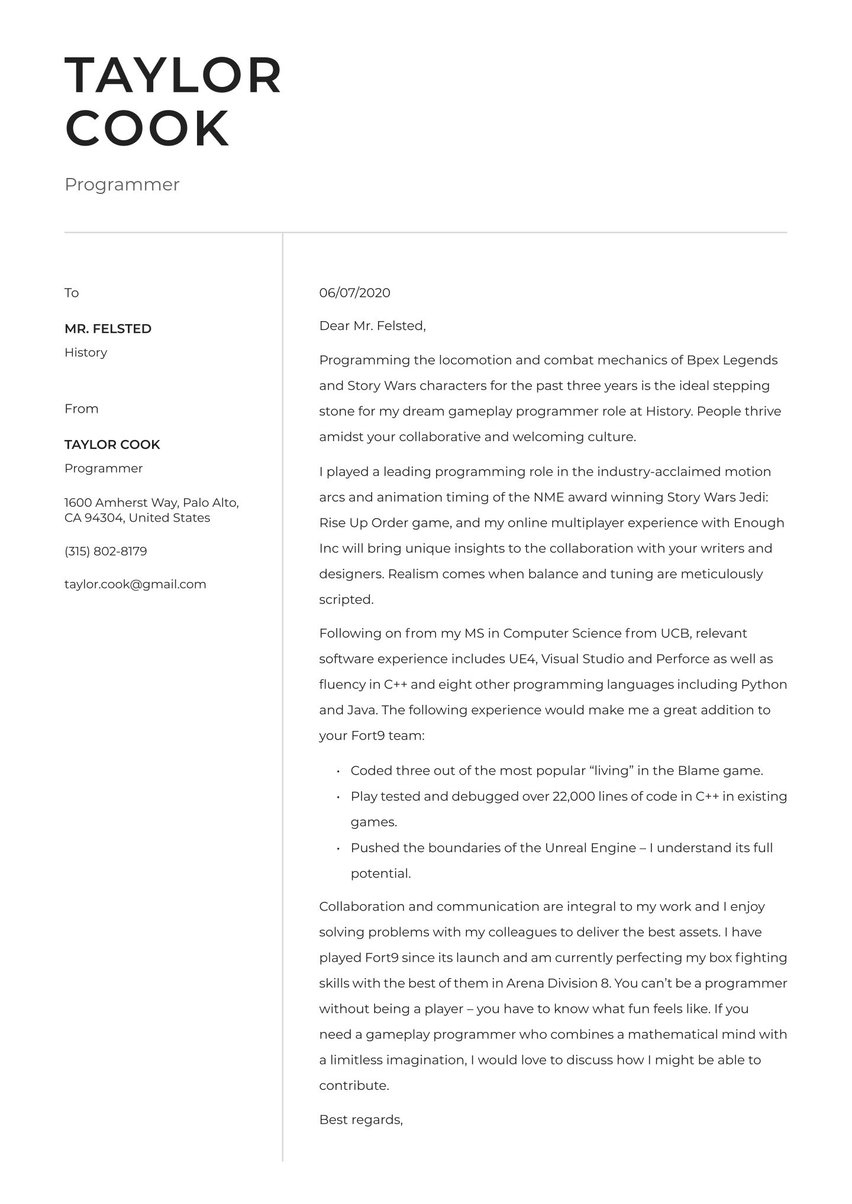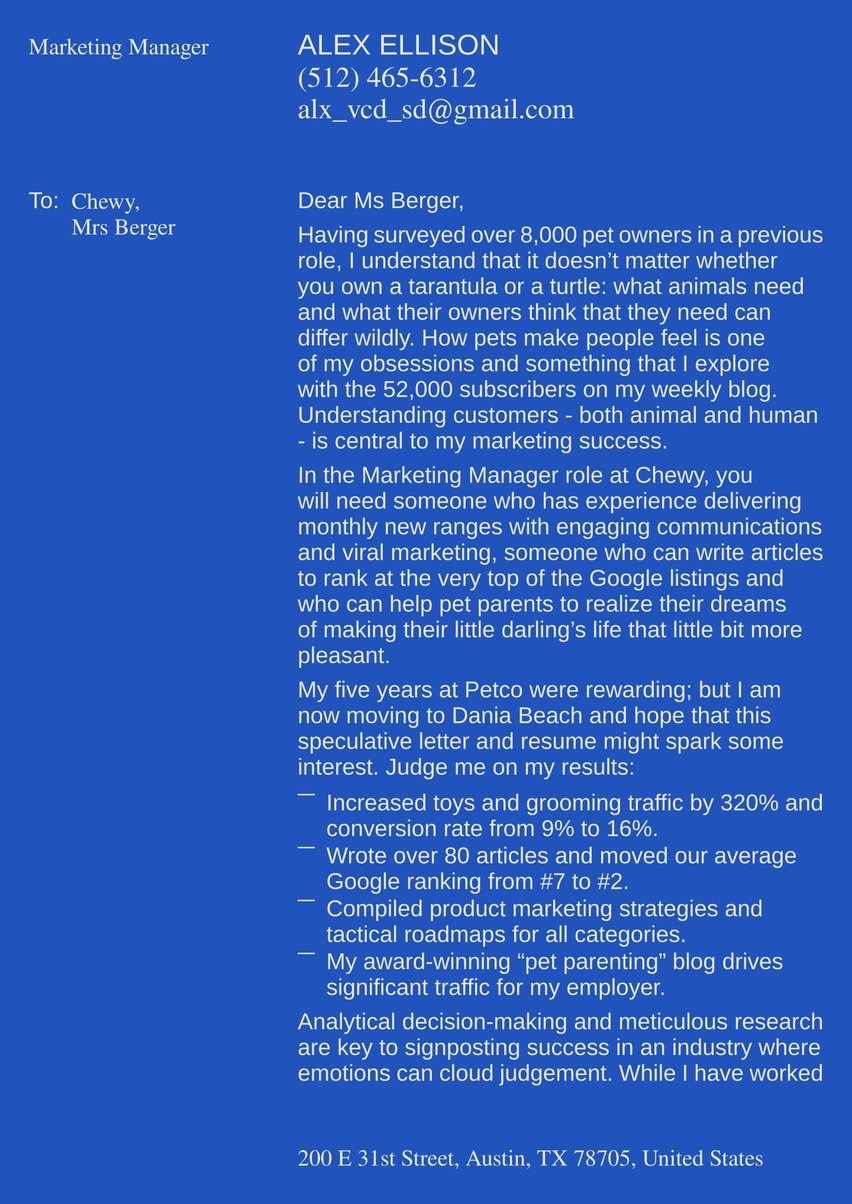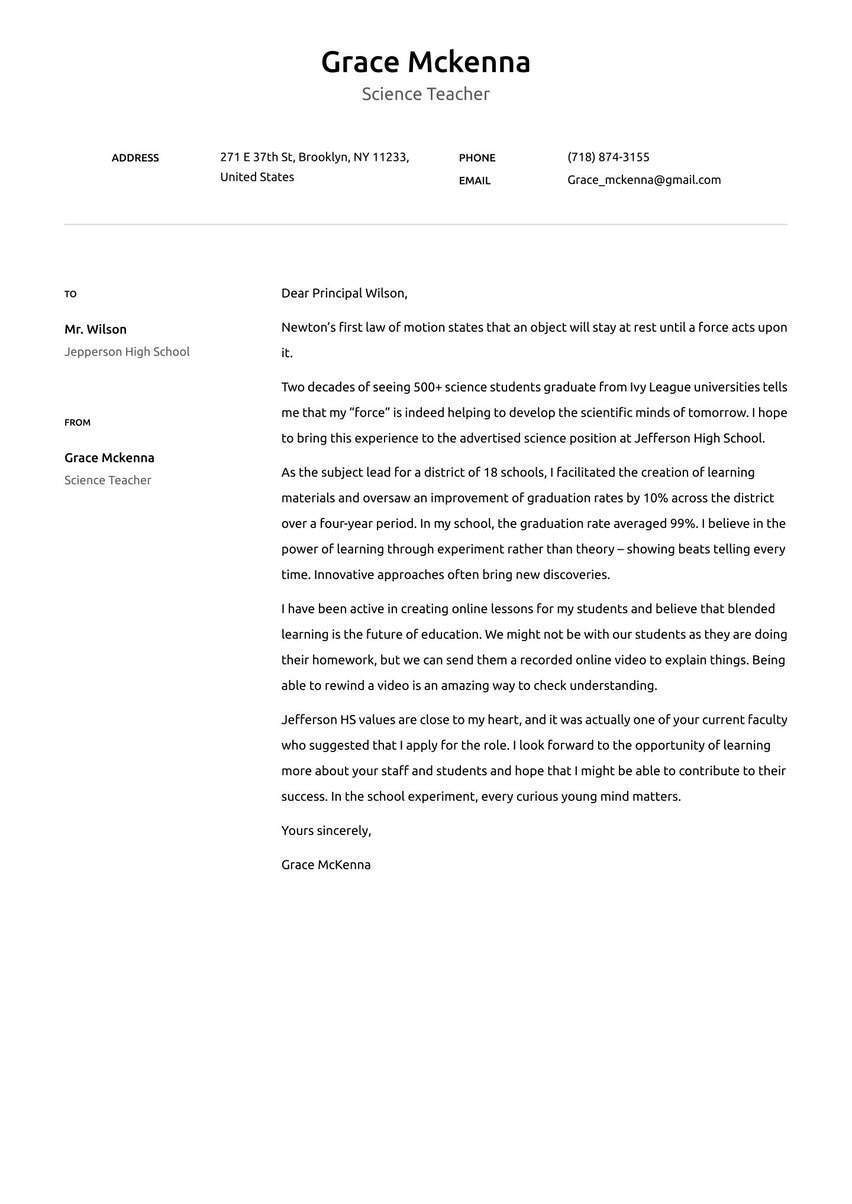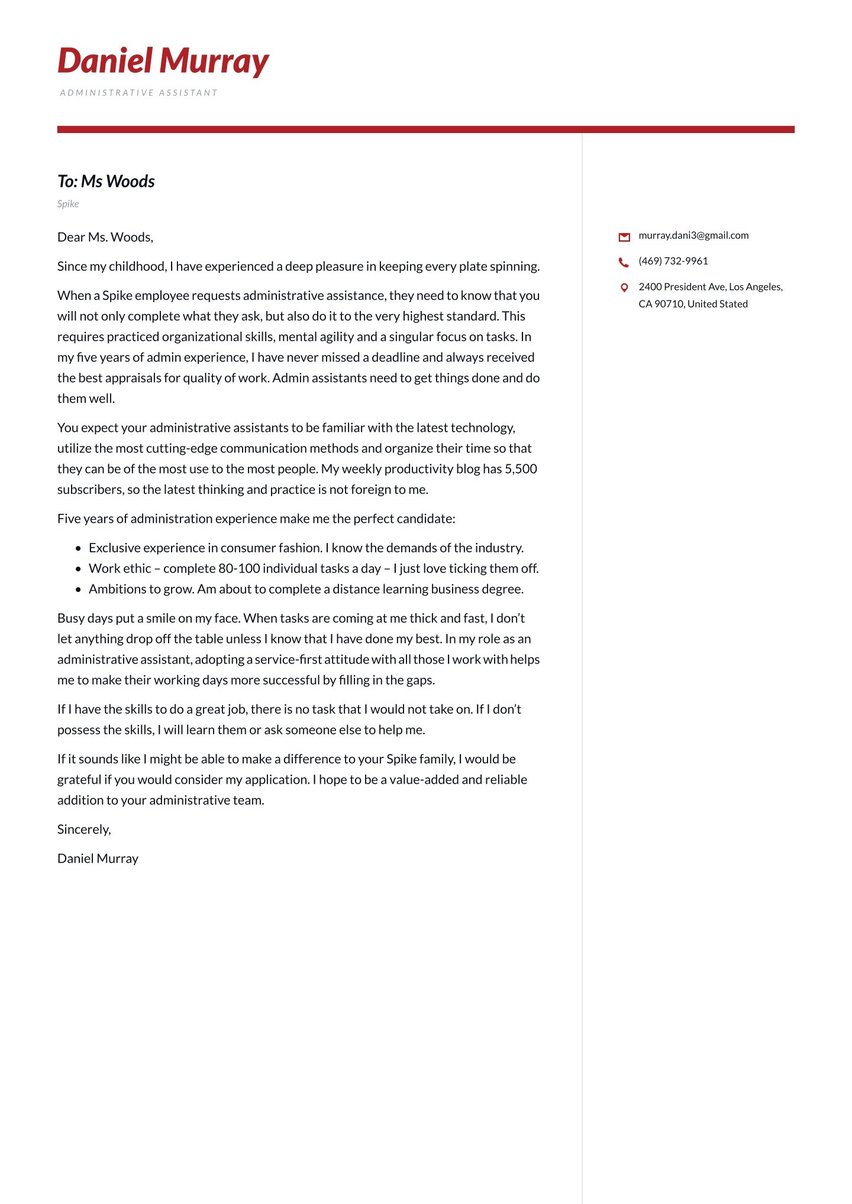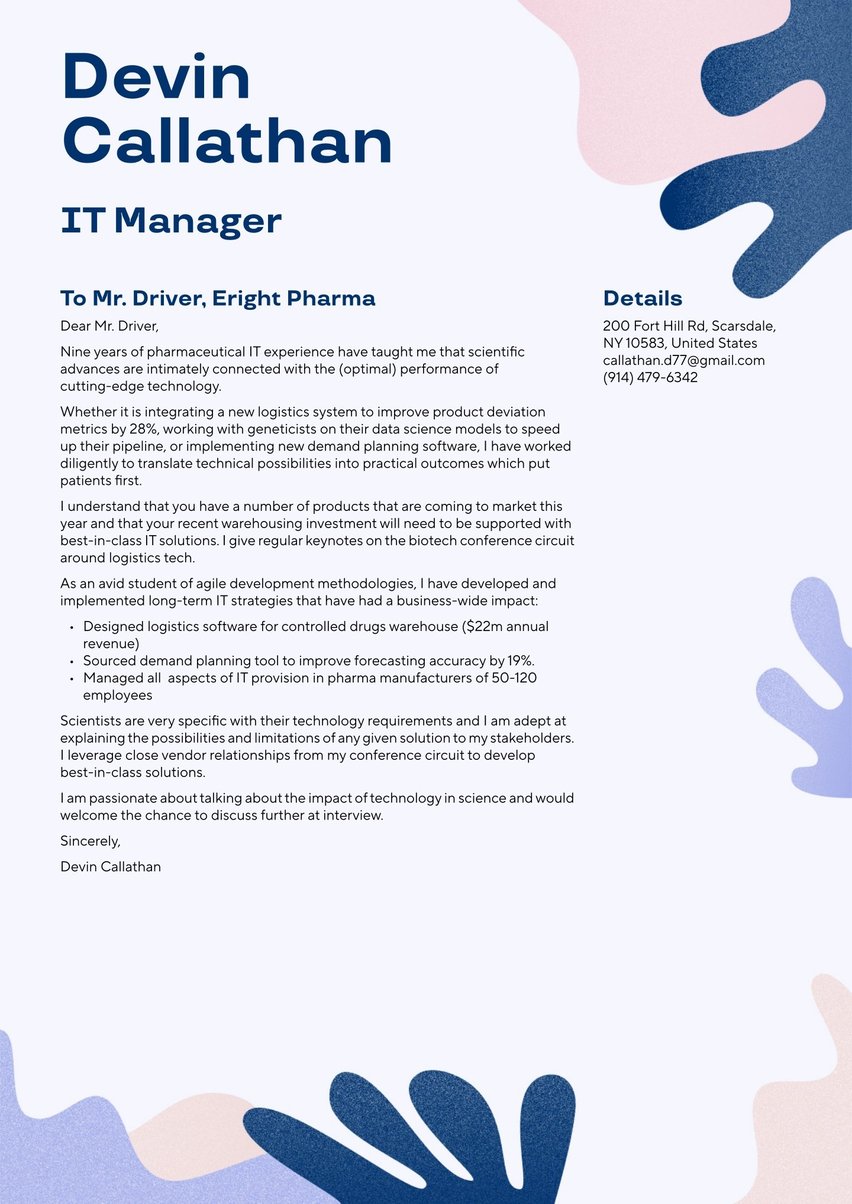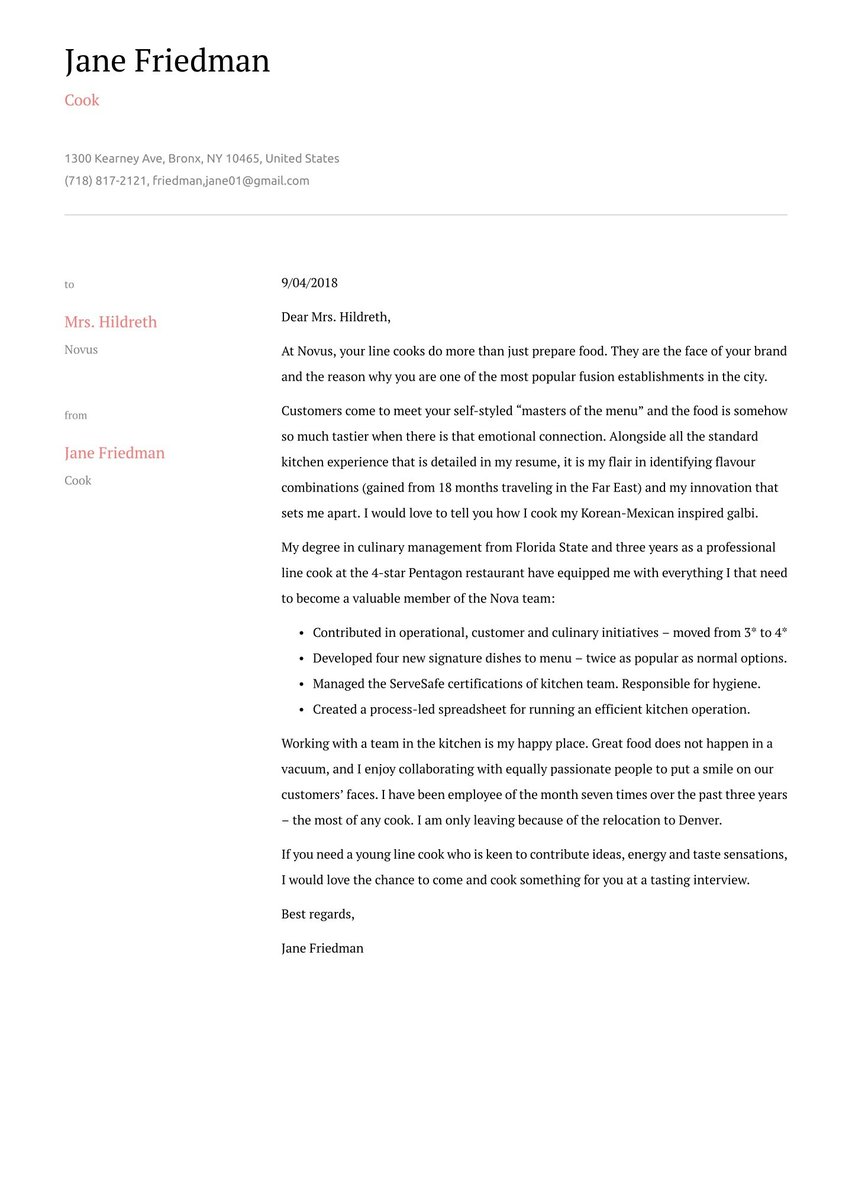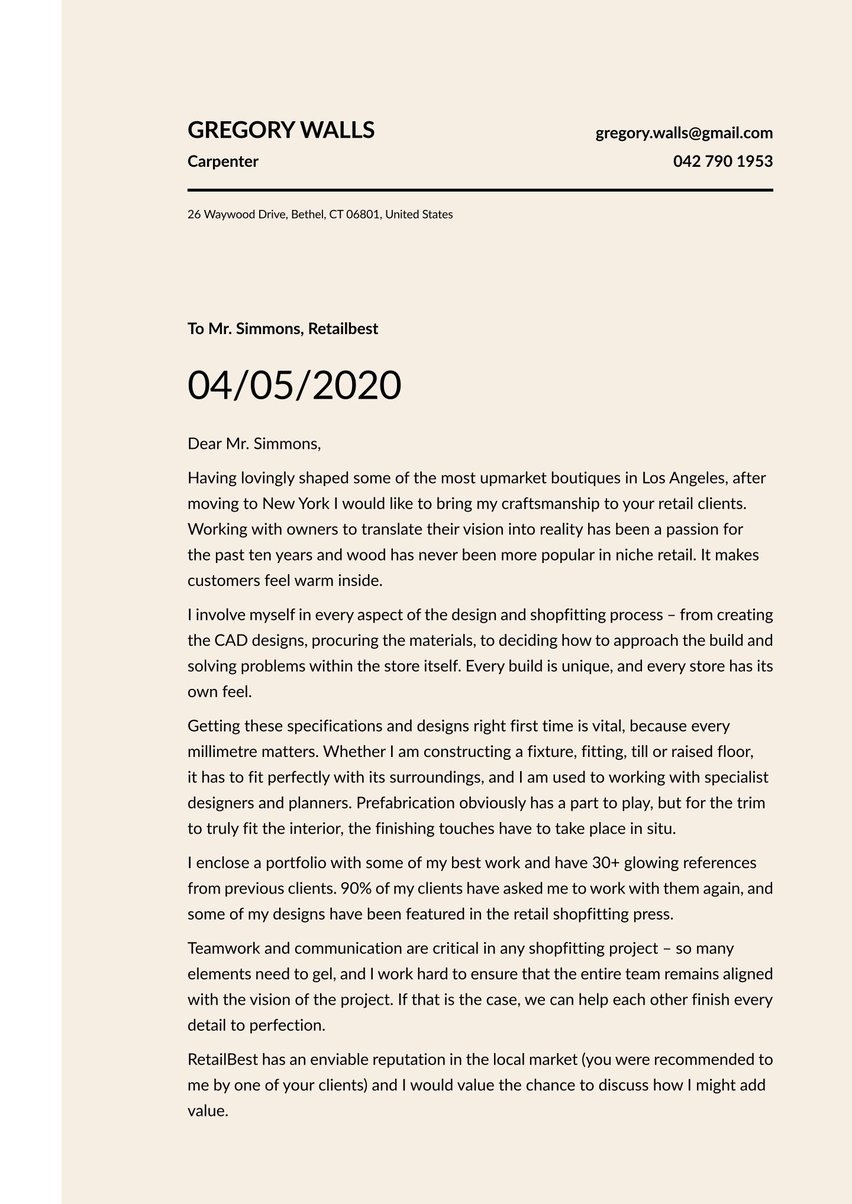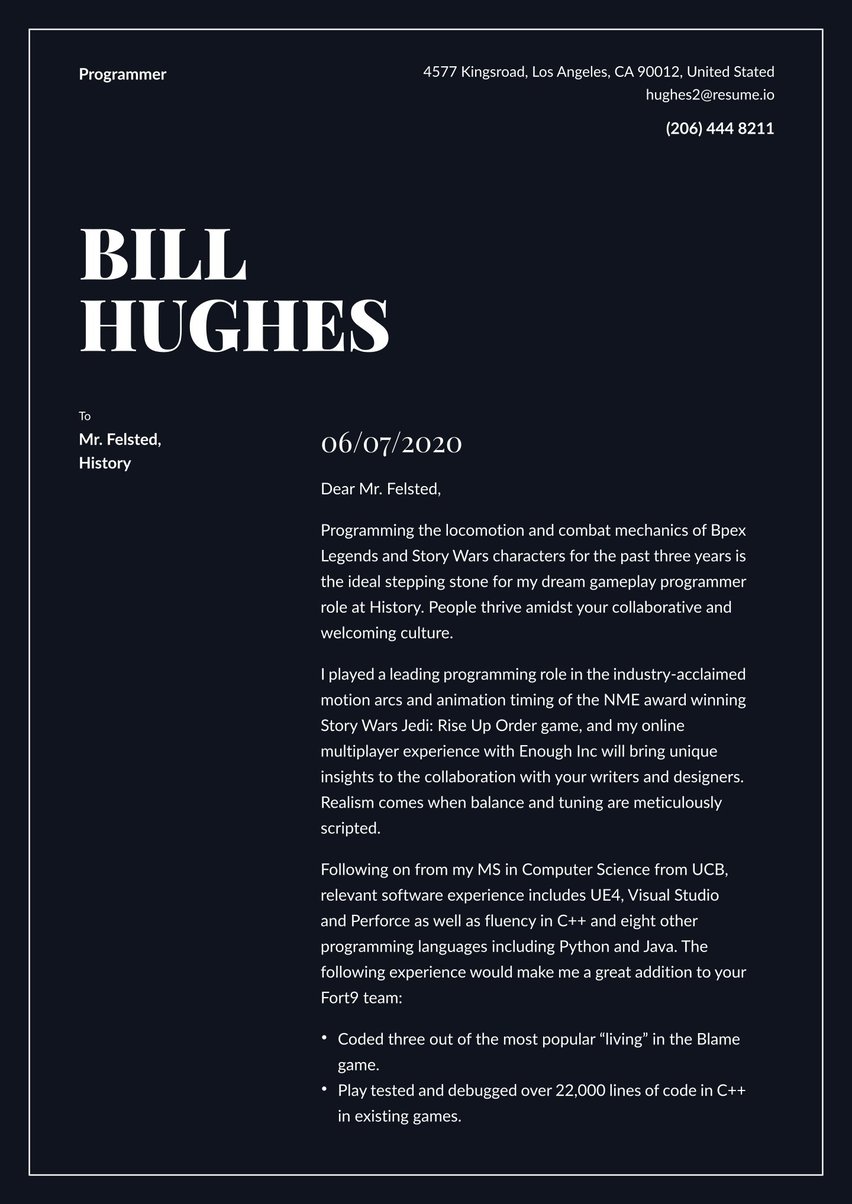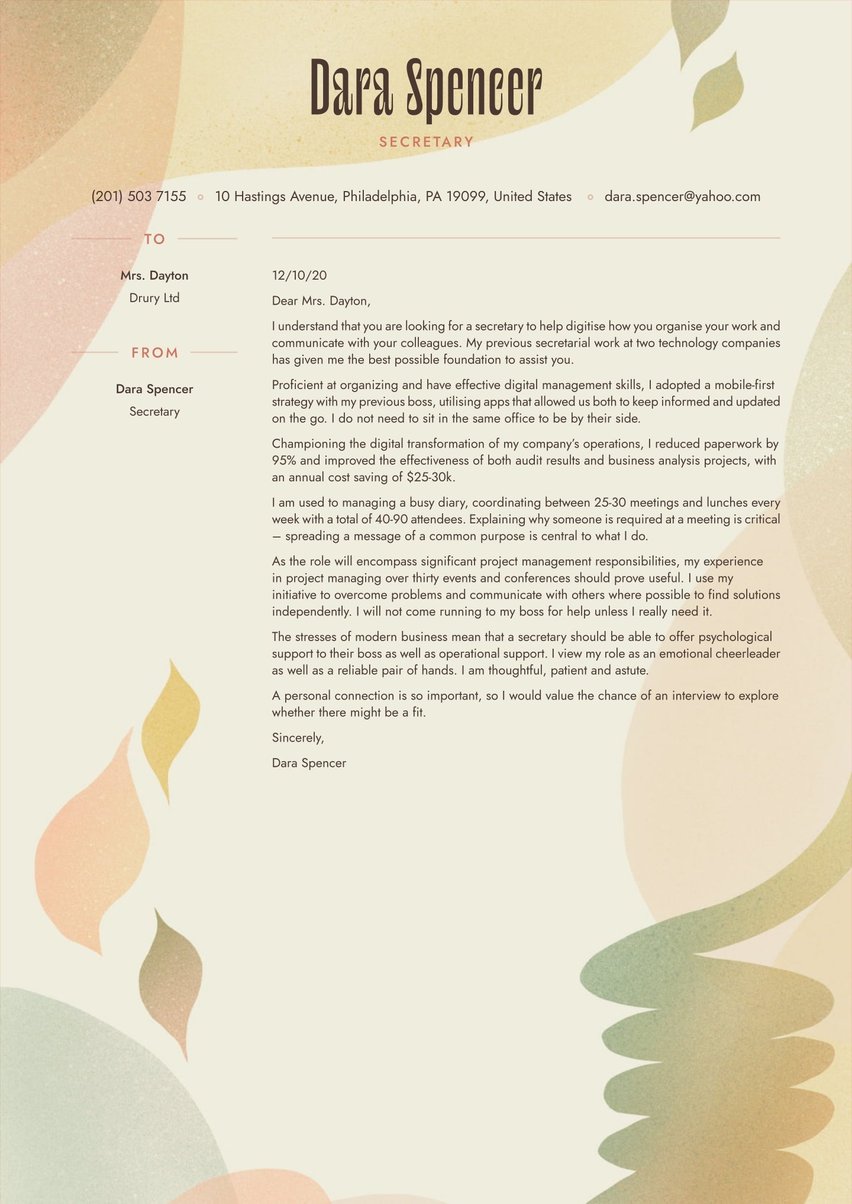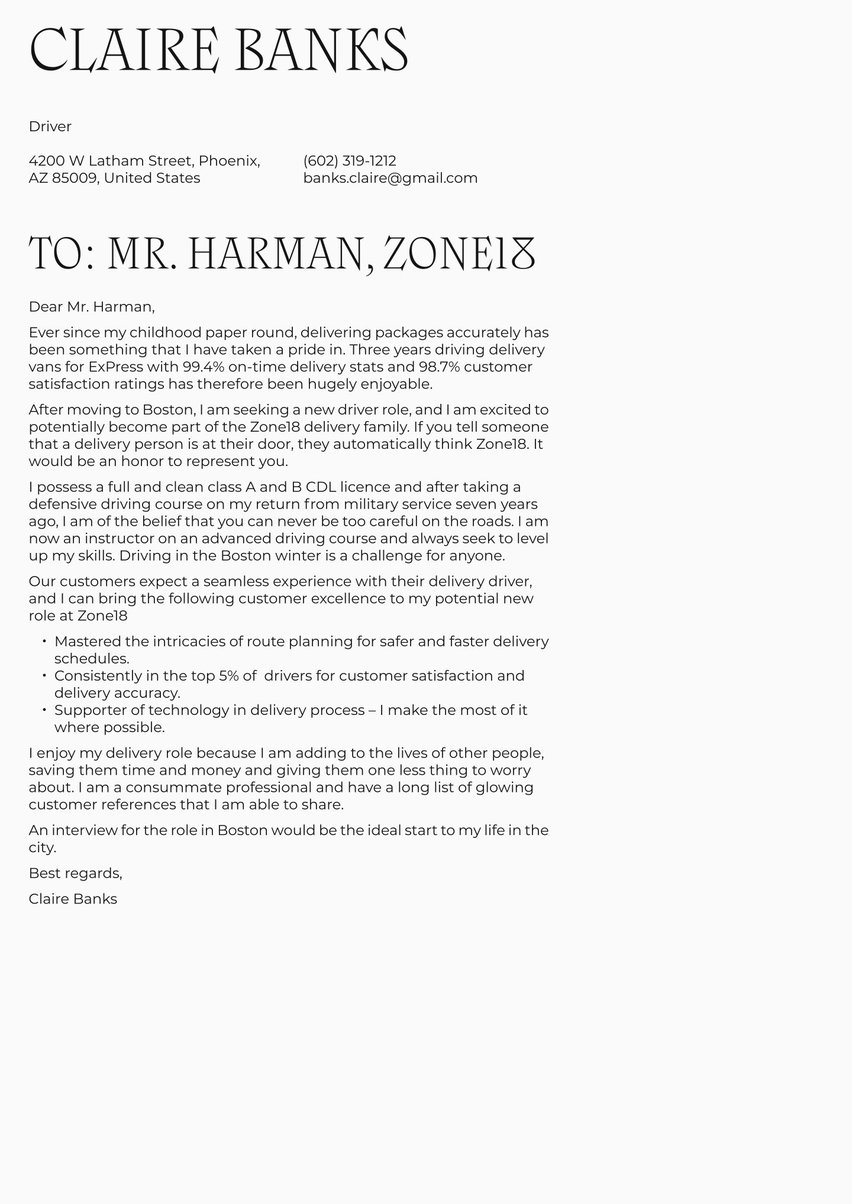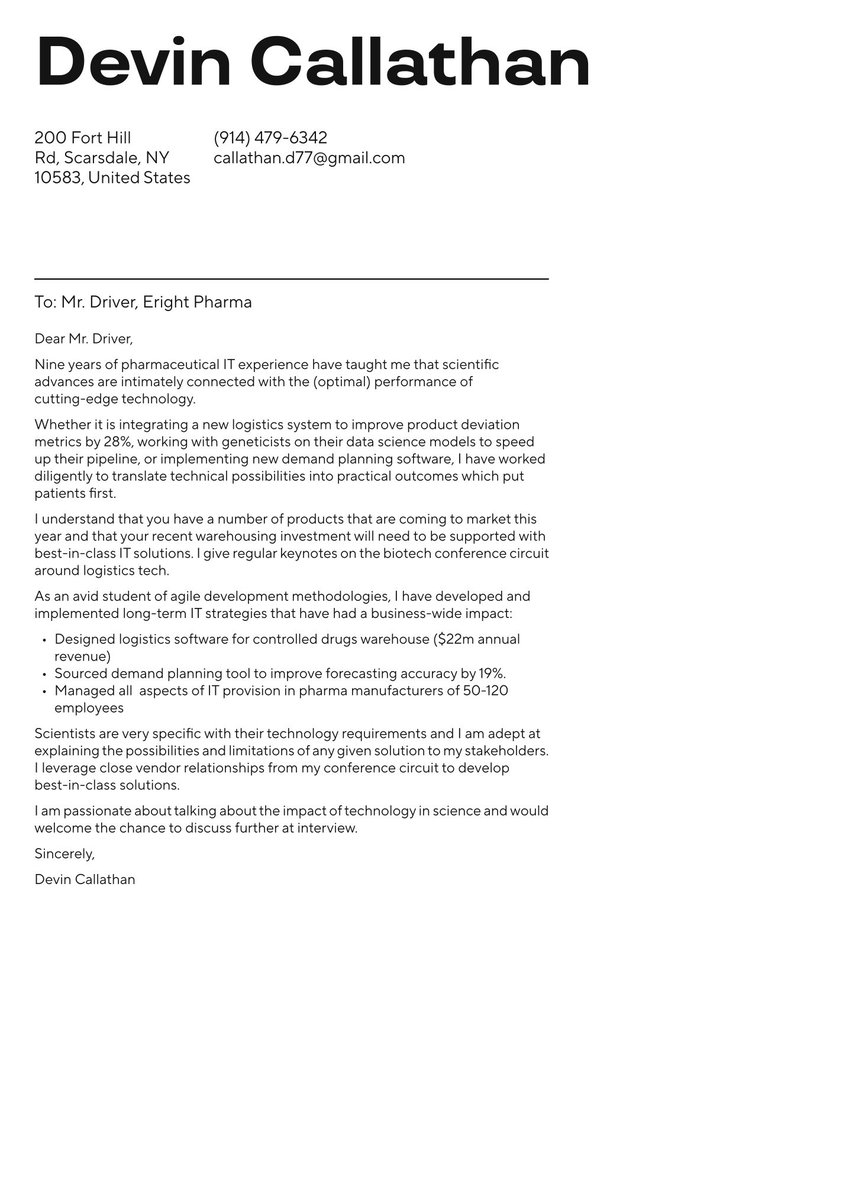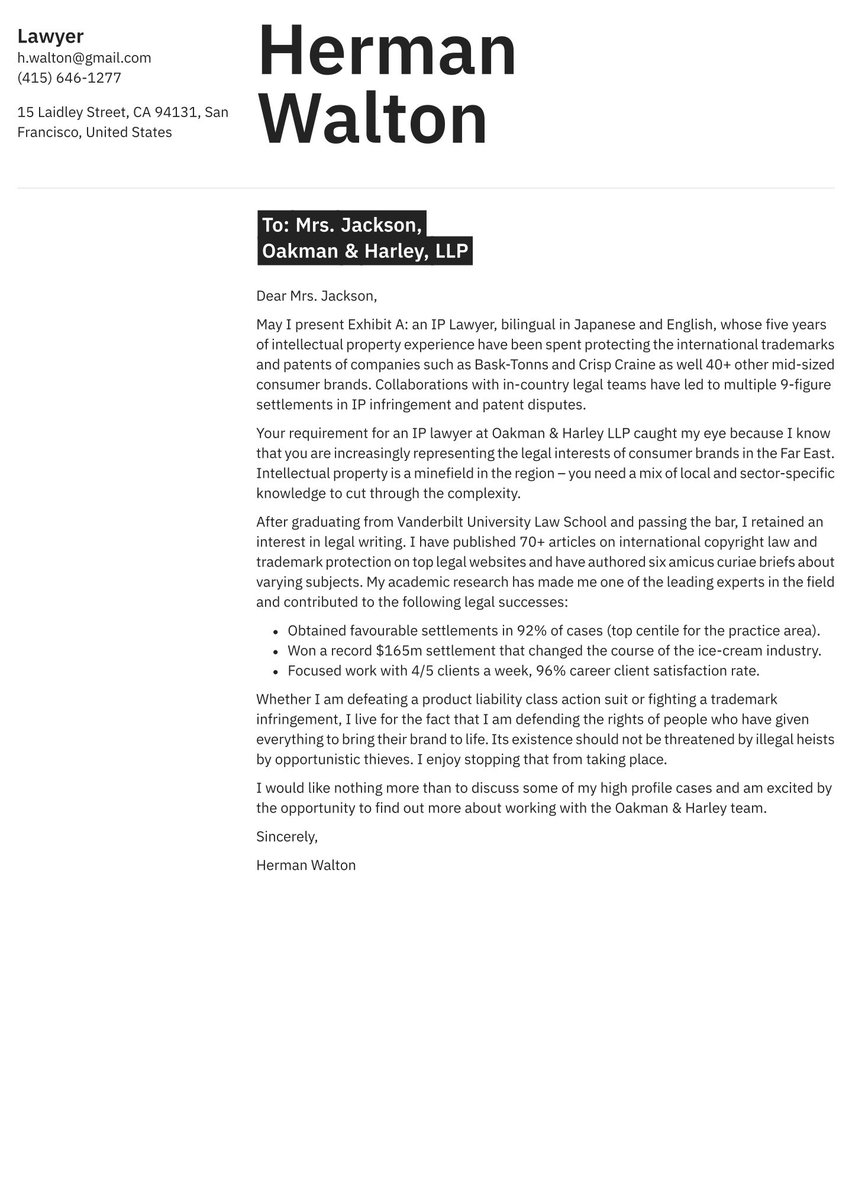When hiring a clinical research coordinator, HR personnel look for someone who understands how to conduct scientific studies and maintain standards at all times. A clinical research coordinator cover letter must impress upon the hiring manager that the candidate focuses on the details of the clinical trial while managing all that it entails.
While resumes give a broad overview of all that you have accomplished in your career, it is within your cover letter that you can express your views on clinical studies, how you work with the principal investigator to ensure the integrity of the trial, and your style in collaborating with the entire research team, the participants, and any other stakeholders.
It’s true that not every employer will read your cover letter, but the extra effort you put into it will make a difference with those employers who do read it, so, yes, you need a cover letter.
This one-page letter may seem a bit daunting when you are staring at a blank screen, the writing guide below will take the mystery out of the process.
When you are finished reading the writing guide and corresponding clinical research coordinator cover letter example, you will know:
- Why cover letters are important parts of your application package
- How best to approach composing an effective cover letter
- The components of a cover letter (introduction, middle part, and closing) and what goes into them
- Common mistakes to avoid in a clinical research coordinator cover letter
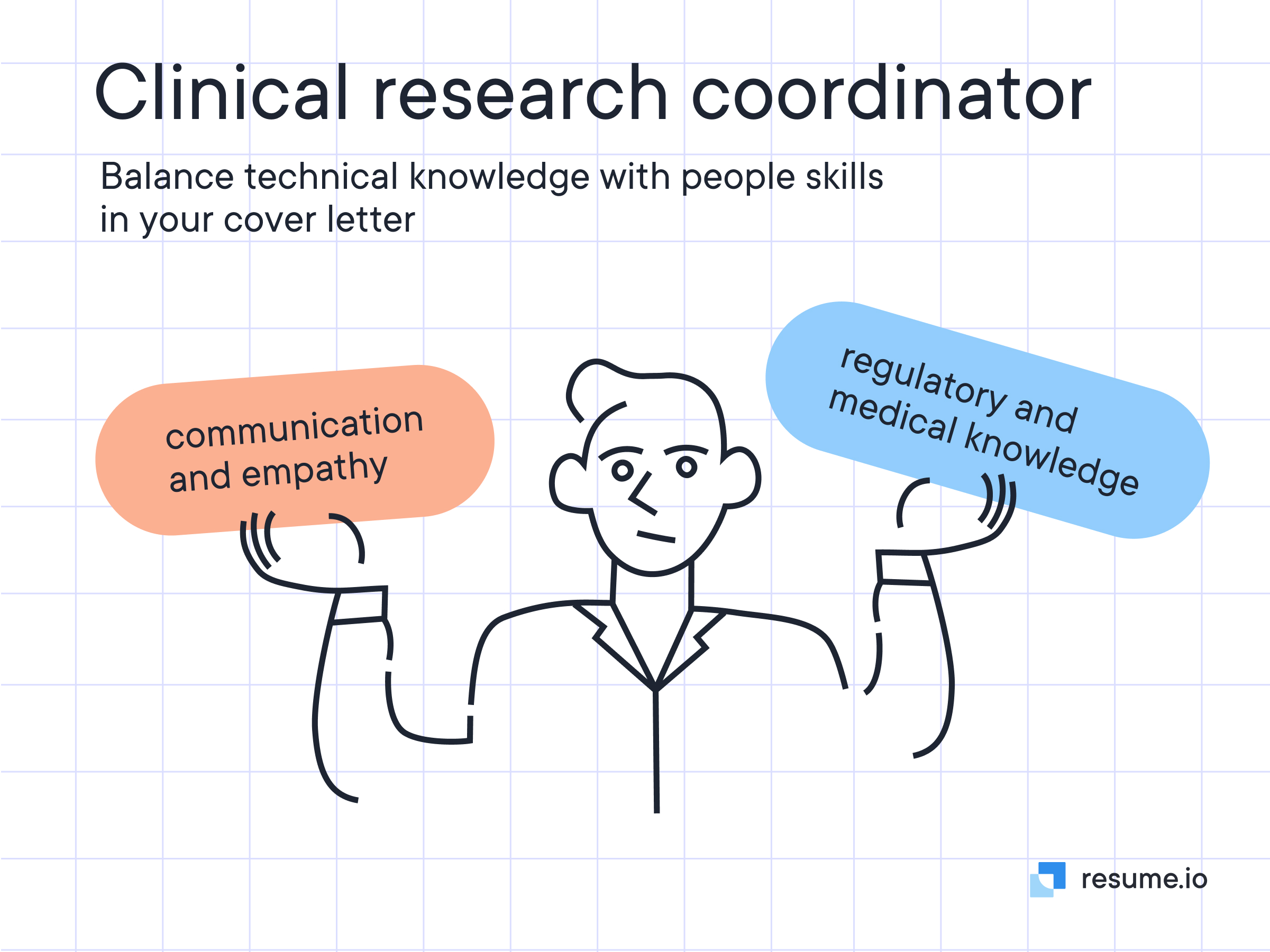
If you’re looking for some additional resources, we have you covered. Take a peek at our similar cover letter samples below now:
- Medical Assistant Cover Letter Sample
- Pharmacist Cover Letter Sample
- Physical Therapist Cover Letter Sample
- Medical Receptionist Cover Letter Sample
- Dental Assistant Cover Letter Sample
- Occupational Therapy Cover Letter Sample
- Pharmacy Technician Cover Letter Sample
- Pharmacy Assistant Cover Letter Sample
- CNA Cover Letter Sample
- Healthcare Cover Letter Sample
- Medical Cover Letter Sample
- Physician Assistant Cover Letter Sample
- LPN (Licensed Practical Nurse) Cover Letter Sample
- Doctor Assistant Cover Letter Sample
- Phlebotomist Cover Letter Sample
Best format for a clinical research coordinator cover letter
Research requires precision, process, and consistency. You wouldn’t begin a medical trial without creating methods for ensuring those three aspects of the trial are in place. The formatting of your clinical research coordinator cover letter gives you a framework for creating those components in your application document. Before you jump into writing, you need to know what goes into your letter.
The format of a clinical research coordinator cover letter should contain the following elements:
- The cover letter header
- The greeting/salutation
- The cover letter intro
- The middle paragraphs (body of the letter)
- The ending paragraph of your cover letter (conclusion and call-to-action)
For a general overview of writing cover letters, turn to the comprehensive cover letter guide, but below you will find specific advice on how to maximize the effectiveness of each specific letter paragraph and section.
This clinical research coordinator cover letter example will give you a blueprint for writing your own cover letter:
Dear Professor Varane,
With a Bachelor of Science in Biology and over five years of experience coordinating clinical research in academic and pharmaceutical environments, I believe my expertise makes me a perfect fit for the clinical research coordinator role.
At Pines, I was responsible for managing a variety of clinical trials across different therapeutic areas, such as oncology, neurology, and cardiology. I have personally overseen the successful completion of 24 clinical studies and was instrumental in recruiting over 600 patients, with a 90% enrollment rate.
I enjoy working with clinicians, principal investigators, data managers, and laboratory staff in cross-functional teams. It is important to streamline processes and ensure that everyone is synchronized in their work. I undertook a project at my previous employer which increased the efficacy of data collection by 25%. I have participated in several research projects that have combined data science with AI analysis and hope to develop my skills more in this area.
On the administration side, I have a proven track record in preparing and submitting regulatory documentation, such as Investigational New Drug (IND) applications and Institutional Review Board (IRB) approvals. My meticulous attention to detail and regulatory compliance contributed to zero findings during a recent FDA audit.
I was alerted to the role by your colleague Sarah Hatton, having worked with her previously at Pines. She felt that my methodical approach would fit in well with the Lansley team. I hope to have the opportunity of an interview to find out more about the potential fit.
Sincerely,
Christian Root
Cover letter header
A standard letter does not provide any visual interest, but an application letter does. Your clinical research coordinator cover letter has a header that provides an opportunity for a bit of creativity, but with the caveat that the most important aspect is clear, legible contact information.
Clinical research is serious, scientific work, so you should choose a header design that conveys organization and professionalism. Coordinate this style with the one you choose for your resume. (Our cover letter templates have corresponding resume layouts.)
Your header should contain your name, title, LinkedIn or other professional social media accounts, and the best email and phone number with which to contact you.
Cover letter greeting
The greeting of your clinical research coordinator cover letter is your textual first impression. While you want to use the hiring manager’s name (addressing people by name creates a feeling of respect and recognition), you also want to stick with their title and last name.
When making professional contact, stay businesslike. Your best bet is “Dear Dr./Mr./Ms./Mx. [surname]. In your profession, it is likely that the principal investigator has a doctorate or a medical degree. Make sure you get their title and the spelling of their name correct. In a detail-oriented career such as yours, you cannot afford to get the details wrong.
A simple call to the lab or company may net you the correct person to address if the job listing lacks a contact person. Otherwise, you may use “Dear Research Team,” or “Dear Science Department.” Do not fall back on the stilted and outdated “To Whom It May Concern.”
The aim of the cover letter greeting: engage your reader by addressing them personally, but professionally.
Cover letter introduction
Just as it sounds, the introduction gives an overview of who you are in experience and temperament. It also sets the tone for the remainder of your document. A clinical coordinator cover letter should sound professional, but that does not mean resorting to a lot of jargon.
Start off with a sentence about your experience working on clinical research and your area(s) of expertise. The purpose of your entire document is to make a case for your employment, so make sure you include your thesis sentence here. You will spend the rest of your letter offering evidence to support your reason.
The introduction should also state why you want this position. It’s not simply that you want to be a clinical research coordinator, but you want to work in this specific environment, for this lab or company, on this type of research. This, of course, means that you must rework your cover letter for each different position.
The purpose of the introduction: hook the reader with your most impressive career highlight and explain your interest in the position.
Dear Professor Varane,
With a Bachelor of Science in Biology and over five years of experience coordinating clinical research in academic and pharmaceutical environments, I believe my expertise makes me a perfect fit for the clinical research coordinator role.
Who are clinical research coordinators?*
- First-time coordinators usually have a bachelor’s degree and five years of research experience
- More than 80 percent of clinical research coordinators are women
- The mean annual salary is $137,900
- People with the following qualities are attracted to clinical research coordinator positions: cooperative, dependable detail-oriented, having integrity and self-control, and self-motivation.
*Source: My Next Move
Cover letter middle part (body)
The middle part of your clinical coordinator cover letter expands upon your introduction by adding evidence of your skills and knowledge. If you’ve already compiled your resume but needed more room to fully explain one or two of your bullet points, this is the place to do it.
Choose one clinical trial you coordinated or worked on if you are looking for a promotion. Take a few sentences to describe it and your role in its success. As a coordinator, you are responsible for many moving pieces and must ensure that all protocols are followed to the letter. Any missed steps could negate the entire study, so be sure to explain your organizational structure.
Try to anticipate interview questions and answer them at this stage. Here are a few you may consider answering in the body of your letter:
- What is the most important quality of a clinical coordinator?
- Why do you want to work in this particular area of research?
- How do you ensure compliance with all regulations during a clinical trial?
- Describe your collaboration style.
- How do you explain risk and ensure trial participants understand all aspects of the study?
You may have space to answer only one of these questions, or you may choose to focus on summarizing and highlighting your successes instead, but be aware that some of these questions will come up if you are granted an interview.
Because a cover letter is text heavy, it is a good idea to use a bulleted list within the body. There’s no need to cut and paste from your resume. Instead, you may describe a trial and then use bulleted items to briefly mention the aspects of the trial you coordinated or to enumerate the findings of the study and your role in those findings.
The goal of the middle part: Stack the evidence in your favor by detailing the successful trials you have worked on.
At Pines, I was responsible for managing a variety of clinical trials across different therapeutic areas, such as oncology, neurology, and cardiology. I have personally overseen the successful completion of 24 clinical studies and was instrumental in recruiting over 600 patients, with a 90% enrollment rate.
I enjoy working with clinicians, principal investigators, data managers, and laboratory staff in cross-functional teams. It is important to streamline processes and ensure that everyone is synchronized in their work. I undertook a project at my previous employer which increased the efficacy of data collection by 25%. I have participated in several research projects that have combined data science with AI analysis and hope to develop my skills more in this area.
On the administration side, I have a proven track record in preparing and submitting regulatory documentation, such as Investigational New Drug (IND) applications and Institutional Review Board (IRB) approvals. My meticulous attention to detail and regulatory compliance contributed to zero findings during a recent FDA audit.
How to close a clinical research coordinator cover letter (conclusion and sign-off)
Your reader has made it this far – great! It’s time to remind them of why they were intrigued. Use the ending of your clinical research coordinator cover letter to reframe your main point and let them know without a doubt that you want to discuss the opportunity further.
If you have space, you may reveal a personal detail, such as a connection to the type of research you are applying to coordinate, but keep it professional. Your call to action, or request for an interview, should be positive without making assumptions.
The aim of the conclusion: remind your reader of your key point and request an interview.
I was alerted to the role by your colleague Sarah Hatton, having worked with her previously at Pines. She felt that my methodical approach would fit in well with the Lansley team. I hope to have the opportunity of an interview to find out more about the potential fit.
Sincerely,
Christian Root
Basic mistakes in a clinical research coordinator application letter (and how to avoid them)
- Shifting or inappropriate tone. Maintain a consistently professional tone throughout your letter. You will be communicating with trial participants and you need to demonstrate that you can be authoritative, yet friendly when you explain the potential risks and answer their questions.
- Errors. Simply put, any mistake in your clinical coordinator cover letter is unacceptable. Clinical trials cannot afford errors (although everyone makes a small one every now and then), so proofread and use spelling and grammar tools to avoid this pitfall.
- Neglecting to personalize your letter. Every job is different and employers will have different priorities and needs. You need to do more than change the name in your greeting if you want to demonstrate that you understand your prospective employer’s needs and know how to fill them.
- Being too modest or too confident. Find the balance between taking too much credit for success and not acknowledging your strengths. Give others credit where it is due. It is fine to say that you achieved success with your team. In fact, the ability to work in a team is a sought-after skill.
Key takeaways
- A great cover letter offers employers details about your personality and career that don’t fit into the tight format of a resume.
- Clinical research coordinators work closely on the day-to-day functioning of research trials and must adhere to strict regulations.
- A friendly greeting that addresses a person by name is the best way to start your cover letter but keep your tone professional throughout.
- Use the middle part of your application letter to head off one or two potential interview questions, or go into detail about a clinical trial you worked on.
- Make sure the hiring manager knows you’re interested by requesting an interview.


